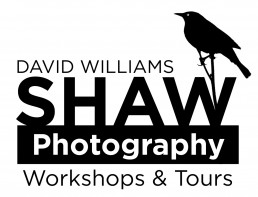 At UnCruise, it’s not uncommon to spend more daytime hours off the ship than on it. Kayaking, hiking, and exploring by skiff are offered each morning and afternoon, meaning you get the chance to really get into the environments of southeast Alaska, not just observe it from a distance.
At UnCruise, it’s not uncommon to spend more daytime hours off the ship than on it. Kayaking, hiking, and exploring by skiff are offered each morning and afternoon, meaning you get the chance to really get into the environments of southeast Alaska, not just observe it from a distance.



As a photographer, this is mandatory. I can’t imagine trying to make decent images from the deck of monster cruise ship. No, you’ve got to get out there. Get close to the water, lay down in the barnacle encrusted rocks, and maybe even wrap your arms around the trunk of a 500 year old tree. That’s why UnCruise is such a special company, they get you out there.





On the morning of the last full day, we swung into Endicott Arm, and began motoring slowly down the long fjord toward Dawes Glacier. Though still out of sight at the far end of the arm, the signs of the glacier surrounded me, as I stood on the bow and drank my morning coffee. Icebergs, and bits of brash ice dotted the dark water. For the first time this trip, the weather had clouded over and the tops of the mountains were hidden behind scudding clouds. I almost cheered when I saw the weather, because I knew it would be perfect for a day amongst the ice. On bright sunny days, the deep blues of glacial ice wash out to white, but on an overcast, or misty day the blues are vivid.

I had a ball that morning as the Legacy navigated around the ice, shooting the various forms and colors of the bergs. Mid-morning we dropped anchor in a small inlet not far from Dawes Glacier and spent a few hours paddling around icebergs and up against seaside cliffs and waterfalls.

The highlight of that day however, was the afternoon, when we boarded zodiacs and raced up toward the active face of Dawes Glacier. Ice was floating everywhere. There were towering chunks of deep blue, and abundant brash ice where Mew Gulls and Arctic Terns perched.


The star of the show was the glacier itself, which again and again over the hour we had in front of it, calved huge chunks into the sea in crashing booms and splashing waves. Once an enormous “shooter” (a chunk of ice that breaks off from beneath the water, shooting upward, rather than falling down) the size of a house, erupted from the water and crumbled to pieces as it emerged into the air.



Though it’s always a goal of photographers to shoot calving glaciers, the reality is that capturing a still of these events is often ineffective. Usually you miss moment, capturing instead of a late splash, or if you are fortunate enough to click as the ice falls, it’s often hard to tell the difference between tumbling ice and the glacial face in a still image. Video however can be very effective, and I spent most of my time during that hour creating moving images.
I could have remained there for hours more, but sadly time pressed, and the ship had a long run to make that night back to Juneau.
One more thing about the tidewater glaciers of southeast Alaska – they are disappearing. I don’t understand how anyone who has visited this part of the world (or read about it, or seen photos, or videos) can deny that climate change is real thing. It’s happening now, it’s happening fast, and we are making it worse. It’s fact. Deal with it.
The Dawes Glacier, like almost every other glacier in the world, is in retreat. Take a look at the images below, and you can see how the ice has pulled back exposing fresh, smooth, un-vegetated rock. The volume of ice too has declined, and nearby tributary glaciers that once contributed ice to the Dawes Glacier, are either entirely gone, or isolated in small valleys high above. Within another decade or so, its entirely possible that this glacier will no longer reach the sea. This has consequences for wildlife like Harbor seals that use the ice flows for spring pupping, and it has consequences for the ocean ecosystem that relies on the base nutrients provided by the glacier. Too, it will impact us. Not just because a warming world, and rising sea levels puts us at risk, but also because the drama of tumbling ice into the sea, the cracks and sounds, and rushing splashes of house-size chunks of ice tumbling, will be a thing of the past.
It’s something we don’t talk about much when we talk about conservation and climate change, but beauty, wonder, and natural drama MATTER. These experiences draw thousands of visitors. People want, and maybe even need, to feel and see, and hear the scale of glacial ice. Beauty is an important, invaluable, and often forgotten aspect of conservation.
The world will be a lesser place without tidewater glaciers. It’s long past time for action.


With any luck, I’ll be back aboard UnCruise next spring, teaching photography and sharing my home state. Keep your eyes peeled on my Appearances page for news on that front, or sign up for my Newsletter to be the first to know.
Have you visited Southeast Alaska? I’d love to know more about your experiences and see your images. Feel free to leave me a comment, contact me, or check in with me on Facebook or Instagram.

You must be logged in to post a comment.